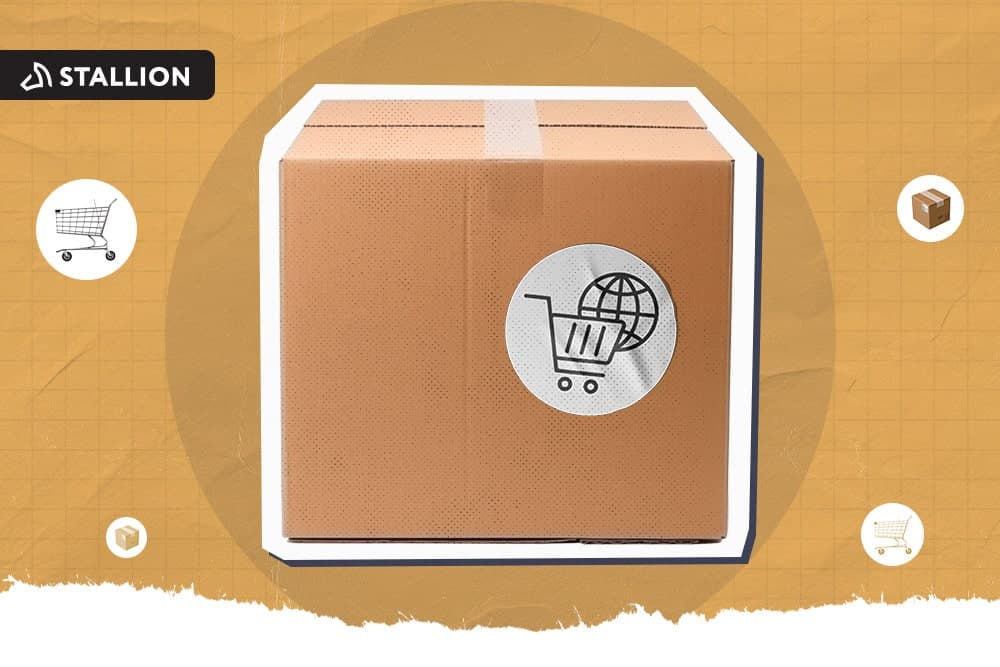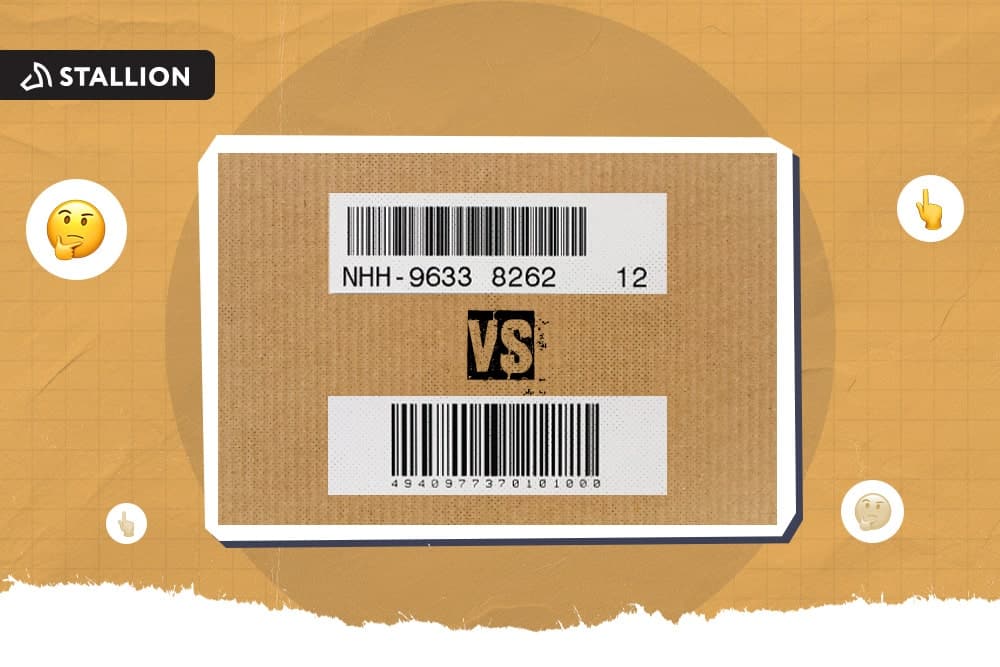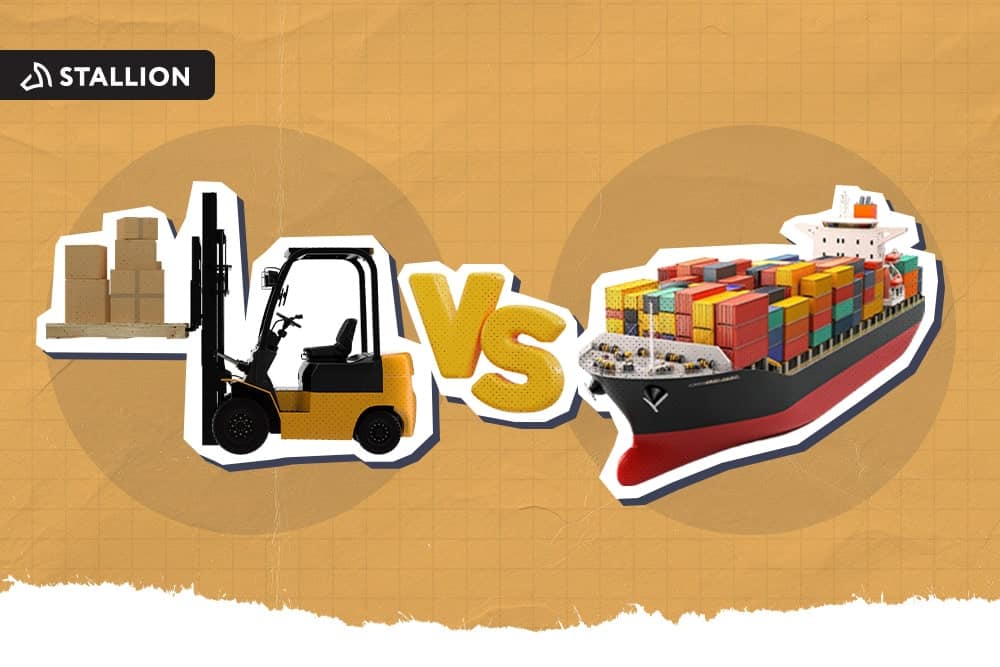
If you want to ship to France or other European countries, you must carefully plan and prepare. Shipping to international destinations can be a lucrative venture for Canadian sellers. It may sound challenging, but you don't have to worry—we've got you covered!
This comprehensive guide will walk you through the essential steps involved in shipping your products to France from Canada.
It will discuss the following topics:
We'll provide valuable insights to ensure a smooth and successful shipping experience.
Are you ready to export to France? Here's a step-by-step roadmap for shipping to France!
When preparing items for international shipments, you must consider different factors. Remember, your package should be able to withstand the long journey. So, the first thing you should check is the packaging.
Use quality packing materials like bubble wrap or packing peanuts to cushion items. This will ensure there's no movement inside the box that will cause the items to break. Then, seal all seams with strong packing tape.
Don't forget to label the package clearly with the recipient's address, country codes, and return address. You should also attach necessary customs forms and invoices outside the package.
Pro Tip! Insure valuable items and consider double boxing fragile goods for added protection.
You have multiple options when looking for the best services. However, note that when you ship to France, cheap shipping is not always the ideal option. Comparing multiple carriers and shipping options helps find the most cost-effective and reliable solution for your needs.
Review options based on the following factors:
Compare carriers to know which company offers the best features that match your needs. Remember to look for services with tracking and insurance options to ensure peace of mind.
Also, factor in customer reviews, package size or weight limitations, and the user-friendliness of the shipping platform. You should be able to integrate their software into your online store.
Additionally, you should consider carriers offering discounts or loyalty programs to reduce costs over time.
Delivering packages internationally costs more components than domestic shipping, so calculating the fees can be confusing. But you don't have to worry—it's easier than you think!
Once you ship, you'll receive a tracking number. Use this to check your package's progress. Monitoring will help you respond to issues immediately and proactively.
Some carriers offer email or SMS notifications when your package reaches key milestones.
As mentioned, the cost of shipping packages to France can vary significantly depending on several factors.
Here are the estimated rates for packages weighing 1 kg and measuring 18 in x 8 in x 5 in.
| Carrier | Shipping Service | Rates |
| Canada Post | Small Packet - International Surface | CAD 26.04 |
| Small Packet - International Air | CAD 49.28 | |
| International Parcel - Surface | CAD 73.16 | |
| Tracked Packet - International | CAD 77.94 | |
| Xpresspost - International | CAD 120.70 | |
| FedEx Canada | International Priority Express | CAD 207.93 |
| International Priority | CAD 198.42 | |
| International Economy | CAD 151.93 | |
| International Connect Plus | CAD 144.34 | |
| DHL Express | DHL Express | CAD 243.35 |
| UPS Canada | UPS Worldwide Express | CAD 119.00 |
| UPS Worldwide Expedited | CAD 75.00 | |
| Stallion | PostNL International Packet Untracked | CAD 22.18 |
| APC Priority Worldwide Untracked | CAD 23.81 | |
| APC Priority Worldwide Tracked | CAD 24.71 | |
| PostNL International Packet Tracked | CAD 24.89 | |
| APC Priority Worldwide Tracked (DDP) | CAD 41.50 |
It is best to use a shipping calculator provided by your chosen carrier or an aggregator. These tools allow you to get an accurate estimate of costs and compare rates from different providers.
Like the costs, the delivery times can also vary depending on several factors. However, you can refer to the estimated delivery times below to know how long the carrier ships from Canada to France.
| Carrier | Shipping Service | Estimated Delivery Time |
| Canada Post | Small Packet - International Surface | 6 to 8 weeks |
| Small Packet - International Air | 2 to 3 weeks | |
| International Parcel - Surface | 6 to 8 weeks | |
| Tracked Packet - International | 2 to 3 weeks | |
| Xpresspost - International | 3 to 5 business days | |
| FedEx Canada | International Priority Express | Next business day by 12:00 P.M. |
| International Priority | Next business day by 6:00 P.M. | |
| International Economy | 3 to 5 business days by 6:00 P.M. | |
| International Connect Plus | 3 to 5 business days by 10:00 P.M. | |
| DHL Express | DHL Express | 3 business days |
| UPS Canada | UPS Worldwide Express | 1 to 2 business days |
| UPS Worldwide Expedited | 2 to 5 business days | |
| Stallion | PostNL International Packet Untracked | 4 to 11 business days |
| APC Priority Worldwide Untracked | 4 to 21 business days | |
| APC Priority Worldwide Tracked | 13 to 17 business days | |
| PostNL International Packet Tracked | 8 to 12 business days | |
| APC Priority Worldwide Tracked (DDP) | 8 to 12 business days |
It's important to note that these are estimated delivery times, and actual delivery may take longer due to unforeseen circumstances.
Customs clearance is the most critical step in the international shipping process. The process can vary depending on the nature of the goods, the destination country's customs procedures, and the specific carrier used.
Customs officials may also inspect the goods to verify their contents and assess any applicable duties or taxes. Therefore, it's important to prepare for it.
Here are the essential documents typically required when delivering packages from Canada to France:
A commercial invoice proof is a document used in international shipping that shows details about the items being sent. It includes information such as:
Customs officials use it to determine if taxes or duties must be paid before the items enter the destination country. It is proof of the transaction that helps avoid delays during transit. Having an accurate commercial invoice ensures a smooth clearance process.
It is a document that shows everything inside a shipment. It includes the following details:
It helps the sender and receiver track what's being shipped. It can also be useful for customs officials to check the contents without opening the packages.
While it doesn't include prices like a commercial invoice, it helps ensure the right items reach their destination and that nothing is missing or damaged during shipping.
A certificate of origin is a document that proves where a product was made or manufactured. It lets the customs authorities know the country from which goods are coming, making it easier for them to determine if the goods are eligible for any special trade agreements.
The customs officials will also know if the package requires additional taxes or duties. In other words, a certificate of origin helps ensure the shipment complies with the rules of the destination country and can sometimes reduce costs for the buyer due to favourable trade conditions.
An import license is a government-issued document allowing you to legally bring certain goods into a country. It helps ensure that the products meet local regulations and safety standards.
Without an import license, customs can stop or delay your shipment, and you may face fines or other penalties.
In most cases, import licenses are not required from Canadian sellers to ship products ordered online. However, this depends on the type of products sold.
For example, common items like clothing or electronics usually don't need an import license. Meanwhile, French authorities may ask for an import license for specific certifications for certain products, such as:
You need to check France's import regulations to ensure compliance. French buyers may also be responsible for handling any required import documentation.
Preparing your documentation accurately and comprehensively is essential for ensuring a smooth customs clearance process when shipping from Canada to France.
Here's how you do it:
Accurate documentation ensures your package moves smoothly through customs without delays or extra charges. Customs officials use the documents to verify what's inside, its value, and whether any taxes or duties are needed.
Thus, if the paperwork is wrong or missing, your shipment could be delayed, returned, or even fined. Additionally, proper documentation protects you against misunderstandings with buyers and helps resolve any issues that might arise during shipping.
You can follow this guide to ensure accurate documentation:
Clear labelling helps ensure packages reach the correct destination without any issues. When you put clear details on the labels, it's easier for the carriers to know where the package is going. It also helps customs officials process the package faster.
Clear shipping labels prevent packages from being lost or misdelivered. They can also ensure that carriers follow special handling instructions during shipping, such as "fragile" or "this side up."
To ensure clear labelling, start by printing the recipient's full name, address, and phone number in large, legible letters. To avoid confusion, include the postal code and country name ("France").
Use a sturdy, waterproof label or cover it with clear tape to protect the package from damage during transit. Then, clearly add your return address in case the receiver needs to return the package.
Again, add special handling instructions if the package requires them. Finally, double-check the information for accuracy before shipping to avoid delays or errors.
A customs broker can help you handle all the complicated customs paperwork and processes. Some of the tasks they complete on your behalf are:
Everything makes international shipping smoother, saving you time and potential mistakes.
To ensure you get the best services, make sure the customs broker you should have a license. Additionally, they must have the certification issued by the Canada Border Services Agency (CBSA). This will show they have the qualifications to handle international shipments.
Also, look for brokers with experience shipping to France. They must also know the Comprehensive Economic and Trade Agreement (CETA), which can help lower costs. Not only that, but it's crucial that they understand both Canadian and French customs regulations to avoid delays.
Understanding customs regulations ensures your package complies with both countries' rules. This helps avoid delays, extra fees, or the shipment being held at customs. Additionally, knowing the regulations ensures that restricted or prohibited items aren't shipped. You will see if you paid the necessary duties or taxes correctly.
The first step to better understand the shipping regulations is to check the official customs websites for both countries. These sites provide information on duties, taxes, prohibited items, and documentation requirements.
Use online tools or calculators from shipping companies to estimate fees and taxes. Also, read your courier service's guidelines to ensure you meet their shipping standards and avoid complications.
You must consider specific prohibited and restricted items to comply with French customs regulations. Here's a general list:
Prohibited Items:
Restricted Items:
Always check the official French customs site or consult a customs broker for up-to-date and specific restrictions before shipping.
Yes, the CETA is a special trade agreement between Canada and France as part of the European Union. It has numerous advantages, such as:
Note that this agreement does not directly apply to personal items or shipments.
To find out if your shipment qualifies for CETA tariff reductions, check if your goods are listed under CETA’s tariff benefits. Use a certificate of origin to prove they meet the agreement’s rules.
You can ship your products duty-free if they qualify under CETA and meet all requirements.
The maximum weight for packages shipped to France varies by carrier. For most services, it's around 30-70 kilograms (66-154 pounds). You can check with your chosen carrier for their specific weight limits. They might also mention extra fees for heavier packages.
If your shipment is delayed in French customs, it may be held for inspection or due to paperwork issues. You might face additional fees or taxes.
Contact your carrier or customs broker to resolve any problems and get updates. Delays can be reduced by ensuring all documents are accurate and complete.
Here are the common issues for packages sent to France:
Shipment delays can also happen if French officials inspect your packages. Ensuring accurate papers and understanding the restrictions can help prevent these problems.
The cheapest way to ship to France is to use standard shipping options rather than express services. You can also save by choosing slower delivery options and avoiding extra services.
For cost-effective delivery solutions, consider using Stallion!
Stallion simplifies international shipping by offering a straightforward and reliable service. With their global reach, you can easily send packages to many countries worldwide without the hassle.
We handle all the complex delivery details, from paperwork to tracking, making the process smooth and stress-free. Whether you’re sending small or large shipments, Stallion ensures your packages arrive on time and in perfect condition.
In summary, shipping to France from Canada can be straightforward with proper preparation and understanding of regulations.
For the most cost-effective international delivery, consider Stallion Express. Our reliable service and competitive rates make us an excellent choice for Canadian sellers who want to efficiently manage their shipments to France.
Aman looks after the content marketing department at Stallion Express. He is passionate about helping businesses grow by providing informative and up-to-date trends in the eCommerce industry. Outside the office, you can find him on the soccer field cheering on Real Madrid.



Can our fellow Torontonians relate?
-
#smallbusiness #business #entrepreneur #socialmedia #shipping #ecommerce #canadianecommerce #shopify #poshmark #b2b #saas #etsy #ebay #canada #canadiansmallbusiness #shoplocalcanada #entrepreneur
#toronto

Here’s your quick hassle free shipping from 🇨🇦 to 🇺🇸 as a business owner!
-
Any questions?! Leave them 👇🏻 and save this video so you don’t forget!
-
#smallbusiness #business #entrepreneur #socialmedia #shipping #ecommerce #canadianecommerce #shopify #poshmark #b2b #saas #etsy #ebay #canada #canadiansmallbusiness #shoplocalcanada #entrepreneur

Meet @drinkbenny a 🇨🇦 female founded energy drink brand! Instead of focusing on their products, they’re taking a unique approach by hosting in person events in different Canadian cities to offer an experience for their community 🧡
-
What are your thoughts on in person events? 💭
-
#smallbusiness #business #entrepreneur #socialmedia #shipping #ecommerce #canadianecommerce #shopify #poshmark #b2b #saas #etsy #ebay #canada #canadiansmallbusiness #shoplocalcanada #entrepreneur

Do you know the difference between DDU and DDP when shipping internationally 🌏 ?
-
Questions? Leave them below! 👇🏻
-
#smallbusiness #business #entrepreneur #socialmedia #shipping #ecommerce #canadianecommerce #shopify #poshmark #b2b #saas #etsy #ebay #canada #canadiansmallbusiness #shoplocalcanada #entrepreneur

Here’s a quick hack to save time from choosing multiple postage options
↪️ Turn on the lowest postage rate automation to save you time!
-
Questions? Leave them below! 👇🏻
-
#smallbusiness #business #entrepreneur #socialmedia #shipping #ecommerce #canadianecommerce #shopify #poshmark #b2b #saas #etsy #ebay #canada #canadiansmallbusiness #shoplocalcanada #entrepreneur
